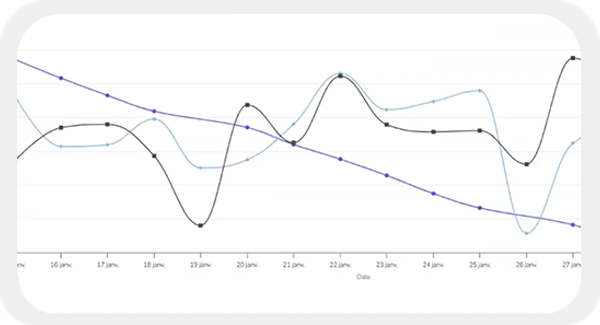EMI Prediction
Anticipate the evolution of your water tables with AI
Want to get a head start on water management? Our EMI prediction module gives you a 90-day view of water levels.
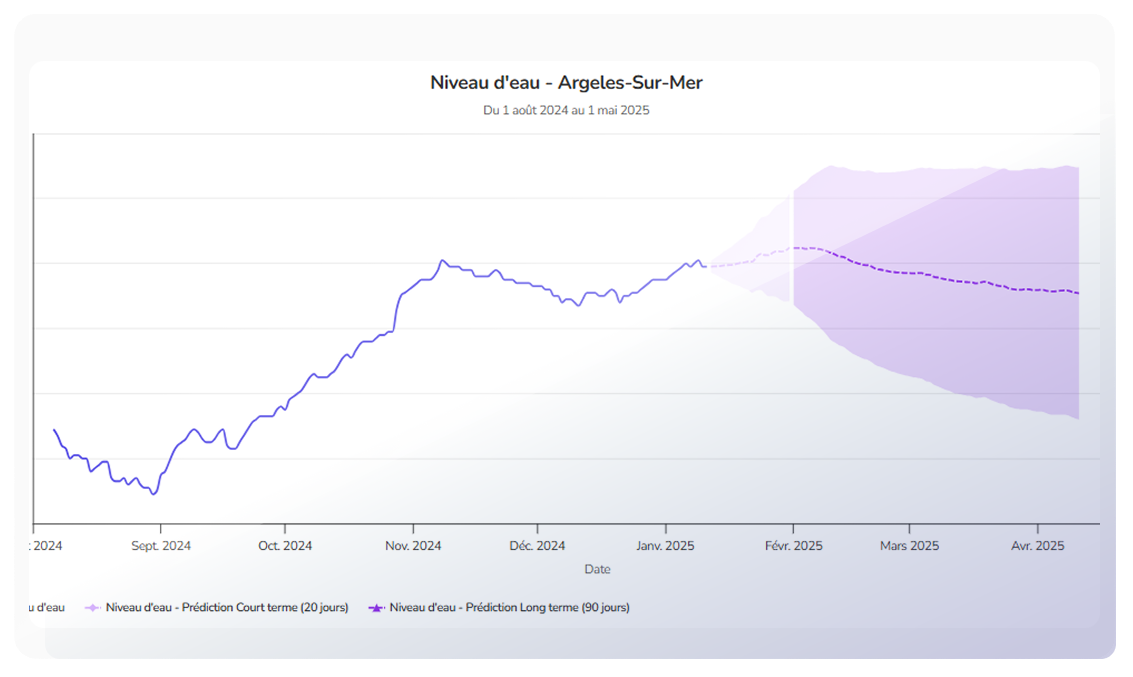
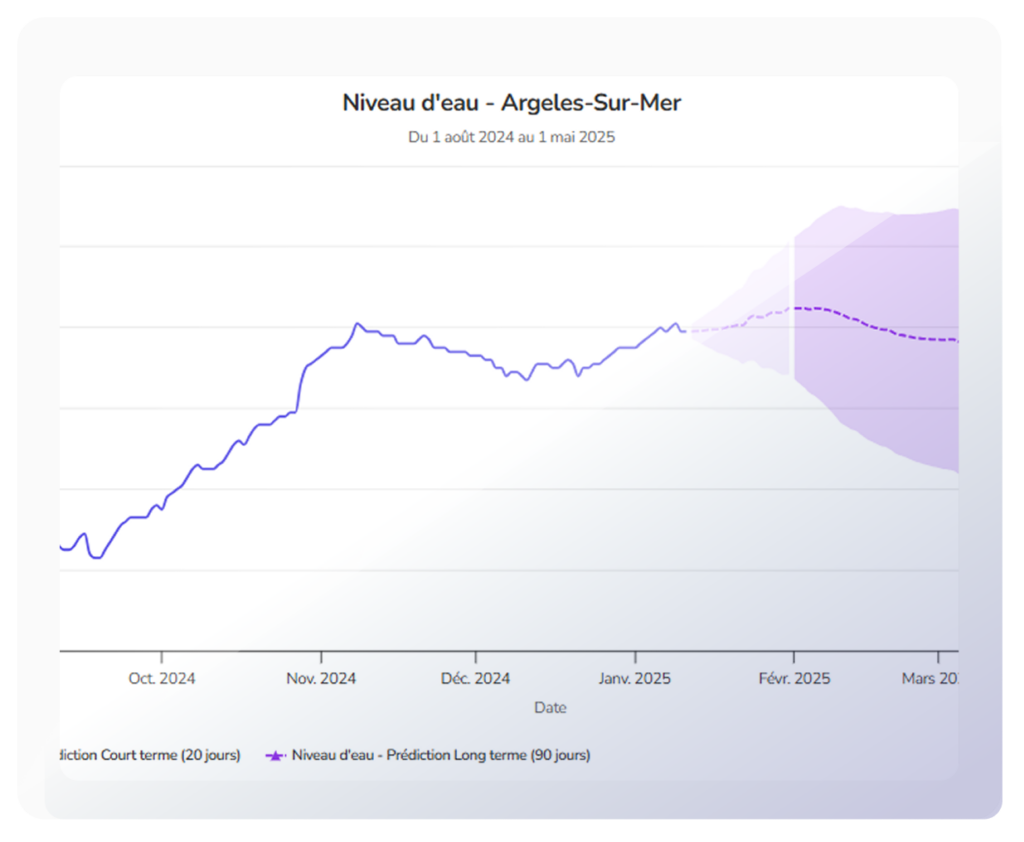
AI-assisted predictions to cope calmly with the risk of drought
With our prediction module, take advantage of artificial intelligence to make decisions before the first signs of drought appear.
Two predictive models
- Short-term projection: a 20-day projection to adjust your immediate actions
- Long-term projection: a 90-day forecast for an optimised management strategy
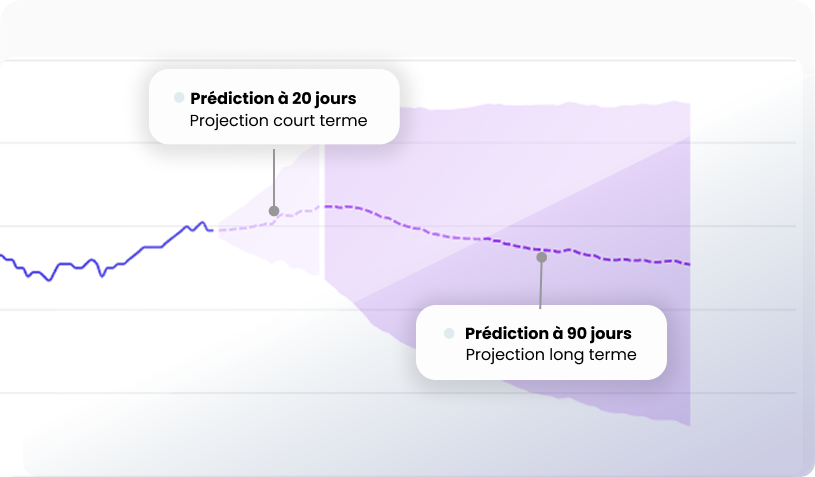
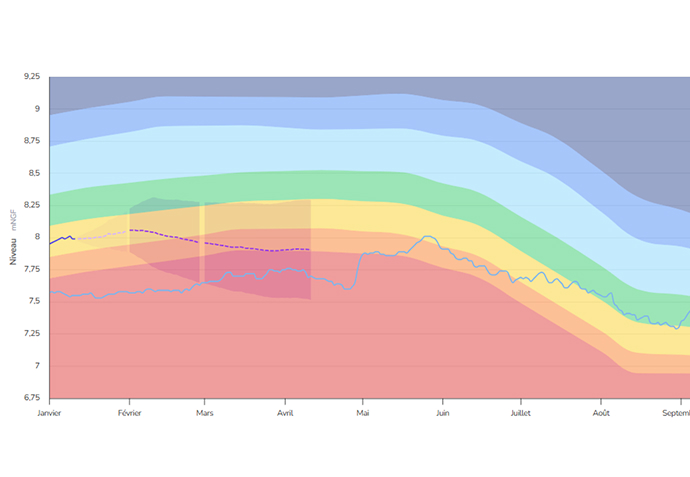
Intuitive visualisation
- A history of groundwater levels to understand their dynamics.
- A projectedtrend curve with a calculated uncertainty envelope for a precise confidence interval.
- A tool that helps you predict critical periods and adjust your resources accordingly.
Hydrogeological support
Our specialists will work with you to interpret your data and understand the correlation between groundwater levels and water levels in your boreholes. Thanks to this technical support, you benefit from in-depth analyses and recommendations tailored to your specific needs.
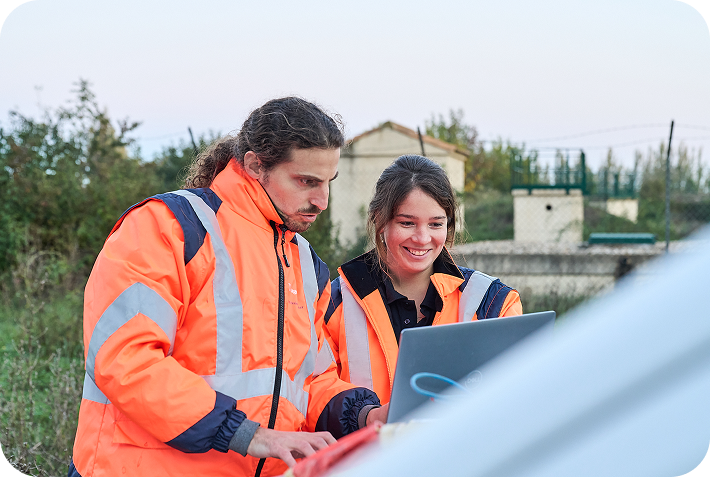

“Thanks to artificial intelligence, we can provide local authorities with an unprecedented ability to anticipate changes in groundwater levels. This is an invaluable tool for preventing pressure on water resources and better managing low-water periods.”
Jena Luchier, hydrogeologist Product Owner of EMI software for local authorities
CASE STUDY
When a local authority tests the prediction module to anticipate drought
01.
Weaknesses identified
Dependence on a single borehole, lack of back-up solutions and interconnections with other boreholes.
02.
Proposed action plan
Installation of a second connected borehole and a buffer reservoir.
03.
Result
Result Secure supply even in the event of a breakdown, guaranteeing continuity of production.
CASE STUDY
How does a cosmetics industry use prediction to anticipate the risks of disruption?
Faced with a drought decree requiring a 25% reduction in its water consumption, the industry called on our expertise.
01.
Results
- Identification of critical risks
Dependence on a single borehole. - Action plan
Implementation of an interconnection with a second borehole and collaboration with the municipality.
02.
Impact
- Production maintained
Despite restrictions, - Savings of 10%
on water-related operating costs.
See the webinar dedicated to predicting groundwater levels

17 April 2025
With Jean Luchier
Hydrogeological engineer at imaGeau
Frequently asked questions
Prediction
Yes, AI is capable ofidentifying the climatic and hydrological trends that influence groundwater levels.
By analysing recharge and consumption cycles, it can predict periods of risk andalert water managers upstream.
No, AI is a decision-making tool, not a substitute for experts. AI models provide accurate analyses, but their interpretation and application remain the responsibility of professionals in the sector.
AI uses large quantities of data (rainfall, temperatures, abstractions, water quality, etc.) to build predictive models. Using machine learning techniques, these models analyse past and current trends to anticipate fluctuations in water tables and warn of potential shortages or flooding.
There are a number of stages involved in setting this up:
1️⃣ Collecting and structuring hydrological and climatic data
2️⃣ Choosing the right artificial intelligence models for your needs
3️⃣ Training and validation of predictive models
4️⃣ Integration into management and decision-making systems
5️⃣ Monitoring and continuous improvement of forecasts
➡️ Data reliability: The quality of forecasts depends on the accuracy of the data provided.
➡️ Model complexity: Some models can be difficult for non-specialists to interpret.
➡️ Technological dependency: Requires appropriate infrastructure to collect and process data continuously.
✅ Accurate predictions: Better anticipation of water level variations.
✅ Optimisation of resources: Improved management of water abstraction and allocation.
✅ Risk reduction: Reduced risk of drought and flooding.
✅ Time and efficiency savings: Rapid, automatic analysis of data in real time.
AI models use a variety of data from different sources:
- Measurement of piezometric levels
- Meteorological data (rainfall, temperature)
- History of water abstraction and use
- Geological and hydrological data
- Satellite images and remote sensing data
Artificial intelligence applied to groundwater is the use of advanced algorithms and machine learning models to analyse hydrogeological data and predictchanges in groundwater reserves. These systems enable better management of resources by anticipating variations in groundwater levels.
Several companies and research organisations are working on these technologies, including :
📌 S tart-ups specialising in hydrology and AI
📌 Universities and environmental research laboratories
📌 Government agencies and meteorological institutes
📌 Water management companies
Artificial intelligence offers an unprecedented opportunity for more sustainable and resilient groundwater management. Its integration into water management policies could contribute to better preservation of resources in the face of climatic and ecological challenges.
AI tools for groundwater forecasting are used by :
- Local authorities and water agencies
- Water supply network managers
- Farmers and industrialists dependent on water resources
- Researchers and hydrogeologists
